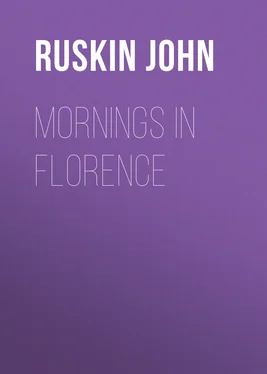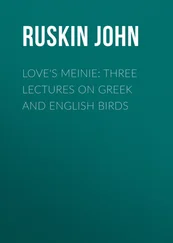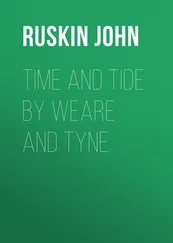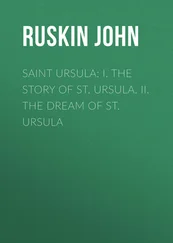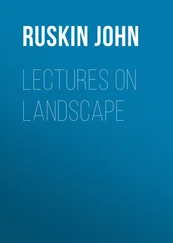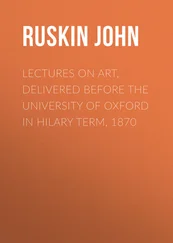John Ruskin - Mornings in Florence
Здесь есть возможность читать онлайн «John Ruskin - Mornings in Florence» — ознакомительный отрывок электронной книги совершенно бесплатно, а после прочтения отрывка купить полную версию. В некоторых случаях можно слушать аудио, скачать через торрент в формате fb2 и присутствует краткое содержание. Жанр: foreign_antique, foreign_home, literature_19, visual_arts, на английском языке. Описание произведения, (предисловие) а так же отзывы посетителей доступны на портале библиотеки ЛибКат.
- Название:Mornings in Florence
- Автор:
- Жанр:
- Год:неизвестен
- ISBN:нет данных
- Рейтинг книги:4 / 5. Голосов: 1
-
Избранное:Добавить в избранное
- Отзывы:
-
Ваша оценка:
- 80
- 1
- 2
- 3
- 4
- 5
Mornings in Florence: краткое содержание, описание и аннотация
Предлагаем к чтению аннотацию, описание, краткое содержание или предисловие (зависит от того, что написал сам автор книги «Mornings in Florence»). Если вы не нашли необходимую информацию о книге — напишите в комментариях, мы постараемся отыскать её.
Mornings in Florence — читать онлайн ознакомительный отрывок
Ниже представлен текст книги, разбитый по страницам. Система сохранения места последней прочитанной страницы, позволяет с удобством читать онлайн бесплатно книгу «Mornings in Florence», без необходимости каждый раз заново искать на чём Вы остановились. Поставьте закладку, и сможете в любой момент перейти на страницу, на которой закончили чтение.
Интервал:
Закладка:
Florence then, thus heated through, first helped her teachers to build finer churches. The Dominicans, or White Friars the Teachers of Faith, began their church of St. Mary's in 1279. The Franciscans, or Black Friars, the teachers of Works, laid the first stone of this church of the Holy Cross in 1294. And the whole city laid the foundations of its new cathedral in 1298. The Dominicans designed their own building; but for the Franciscans and the town worked the first great master of Gothic art, Arnolfo; with Giotto at his side, and Dante looking on, and whispering sometimes a word to both.
And here you stand beside the high altar of the Franciscans' church, under a vault of Arnolfo's building, with at least some of Giotto's colour on it still fresh; and in front of you, over the little altar, is the only reportedly authentic portrait of St. Francis, taken from life by Giotto's master. Yet I can hardly blame my two English friends for never looking in. Except in the early morning light, not one touch of all this art can be seen. And in any light, unless you understand the relations of Giotto to St. Francis, and of St. Francis to humanity, it will be of little interest.
Observe, then, the special character of Giotto among the great painters of Italy is his being a practical person. Whatever other men dreamed of, he did. He could work in mosaic; he could work in marble; he could paint; and he could build; and all thoroughly: a man of supreme faculty, supreme common sense. Accordingly, he ranges himself at once among the disciples of the Apostle of Works, and spends most of his time in the same apostleship.
Now the gospel of Works, according to St. Francis, lay in three things. You must work without money, and be poor. You must work without pleasure, and be chaste. You must work according to orders, and be obedient.
Those are St. Francis's three articles of Italian opera. By which grew the many pretty things you have come to see here.
And now if you will take your opera-glass and look up to the roof above Arnolfo's building, you will see it is a pretty Gothic cross vault, in four quarters, each with a circular medallion, painted by Giotto. That over the altar has the picture of St. Francis himself. The three others, of his Commanding Angels. In front of him, over the entrance arch, Poverty. On his right hand, Obedience. On his left, Chastity.
Poverty, in a red patched dress, with grey wings, and a square nimbus of glory above her head, is flying from a black hound, whose head is seen at the corner of the medallion.
Chastity, veiled, is imprisoned in a tower, while angels watch her.
Obedience bears a yoke on her shoulders, and lays her hand on a book.
Now, this same quatrefoil, of St. Francis and his three Commanding Angels, was also painted, but much more elaborately, by Giotto, on the cross vault of the lower church of Assisi, and it is a question of interest which of the two roofs was painted first.
Your Murray's Guide tells you the frescos in this chapel were painted between 1296 and 1304. But as they represent, among other personages, St. Louis of Toulouse, who was not canonized till 1317, that statement is not altogether tenable. Also, as the first stone of the church was only laid in 1294, when Giotto was a youth of eighteen, it is little likely that either it would have been ready to be painted, or he ready with his scheme of practical divinity, two years later.
Farther, Arnolfo, the builder of the main body of the church, died in 1310. And as St. Louis of Toulouse was not a saint till seven years afterwards, and the frescos therefore beside the window not painted in Arnolfo's day, it becomes another question whether Arnolfo left the chapels or the church at all, in their present form.
On which point—now that I have shown you where Giotto's St. Louis is—I will ask you to think awhile, until you are interested; and then I will try to satisfy your curiosity. There fore, please leave the little chapel for the moment, and walk down the nave, till you come to two sepulchral slabs near the west end, and then look about you and see what sort of a church Santa Croce is.
Without looking about you at all, you may find, in your Murray, the useful information that it is a church which "consists of a very wide nave and lateral aisles, separated by seven fine pointed arches." And as you will be—under ordinary conditions of tourist hurry—glad to learn so much, without looking, it is little likely to occur to you that this nave and two rich aisles required also, for your complete present comfort, walls at both ends, and a roof on the top. It is just possible, indeed, you may have been struck, on entering, by the curious disposition of painted glass at the east end;—more remotely possible that, in returning down the nave, you may this moment have noticed the extremely small circular window at the west end; but the chances are a thousand to one that, after being pulled from tomb to tomb round the aisles and chapels, you should take so extraordinary an additional amount of pains as to look up at the roof,—unless you do it now, quietly. It will have had its effect upon you, even if you don't, without your knowledge. You will return home with a general impression that Santa Croce is, somehow, the ugliest Gothic church you ever were in. Well, that is really so; and now, will you take the pains to see why?
There are two features, on which, more than on any others, the grace and delight of a fine Gothic building depends; one is the springing of its vaultings, the other the proportion and fantasy of its traceries. This church of Santa Croce has no vaultings at all, but the roof of a farm-house barn. And its windows are all of the same pattern,—the exceedingly prosaic one of two pointed arches, with a round hole above, between them.
And to make the simplicity of the roof more conspicuous, the aisles are successive sheds, built at every arch. In the aisles of the Campo Santo of Pisco, the unbroken flat roof leaves the eye free to look to the traceries; but here, a succession of up-and-down sloping beam and lath gives the impression of a line of stabling rather than a church aisle. And lastly, while, in fine Gothic buildings, the entire perspective concludes itself gloriously in the high and distant apse, here the nave is cut across sharply by a line of ten chapels, the apse being only a tall recess in the midst of them, so that, strictly speaking, the church is not of the form of a cross, but of a letter T.
Can this clumsy and ungraceful arrangement be indeed the design of the renowned Arnolfo?
Yes, this is purest Arnolfo-Gothic; not beautiful by any means; but deserving, nevertheless, our thoughtfullest examination. We will trace its complete character another day; just now we are only concerned with this pre-Christian form of the letter T, insisted upon in the lines of chapels.
Respecting which you are to observe, that the first Christian churches in the catacombs took the form of a blunt cross naturally; a square chamber having a vaulted recess on each side; then the Byzantine churches were structurally built in the form of an equal cross; while the heraldic and other ornamental equal-armed crosses are partly signs of glory and victory, partly of light, and divine spiritual presence. 2 2 See, on this subject generally, Mr. R. St. J. Tyrwhitt's "Art-Teaching of the Primitive Church." S. P. B. K., 1874.
But the Franciscans and Dominicans saw in the cross no sign of triumph, but of trial. 3 3 Footnote: I have never obtained time for any right study of early Christian church-discipline,—nor am I sure to how many other causes, the choice of the form of the basilica may be occasionally attributed, or by what other communities it may be made. Symbolism, for instance, has most power with the Franciscans, and convenience for preaching with the Dominicans; but in all cases, and in all places, the transition from the close tribune to the brightly-lighted apse, indicates the change in Christian feeling between regarding a church as a place for public judgment or teaching, or a place for private prayer and congregational praise. The following passage from the Dean of Westminster's perfect history of his Abbey ought to be read also in the Florentine church:—"The nearest approach to Westminster Abbey in this aspect is the church of Santa Croce at Florence. There, as here, the present destination of the building was no part of the original design, but was the result of various converging causes. As the church of one of the two great preaching orders, it had a nave large beyond all proportion to its choir. That order being the Franciscan, bound by vows of poverty, the simplicity of the worship preserved the whole space clear from any adventitious ornaments. The popularity of the Franciscans, especially in a convent hallowed by a visit from St. Francis himself, drew to it not only the chief civic festivals, but also the numerous families who gave alms to the friars, and whose connection with their church was, for this reason, in turn encouraged by them. In those graves, piled with standards und achievements of the noble families of Florence, were successively interred—not because of their eminence, but as members or friends of those families—some of the most illustrious personages of the fifteenth century. Thus it came to pass, as if by accident, that in the vault of the Buonarotti was laid Michael Angelo; in the vault of the Viviani the preceptor of one of their house, Galileo. From those two burials the church gradually be same the recognized shrine of Italian genius."
The wounds of their Master were to be their inheritance. So their first aim was to make what image to the cross their church might present, distinctly that of the actual instrument of death.
Интервал:
Закладка:
Похожие книги на «Mornings in Florence»
Представляем Вашему вниманию похожие книги на «Mornings in Florence» списком для выбора. Мы отобрали схожую по названию и смыслу литературу в надежде предоставить читателям больше вариантов отыскать новые, интересные, ещё непрочитанные произведения.
Обсуждение, отзывы о книге «Mornings in Florence» и просто собственные мнения читателей. Оставьте ваши комментарии, напишите, что Вы думаете о произведении, его смысле или главных героях. Укажите что конкретно понравилось, а что нет, и почему Вы так считаете.
